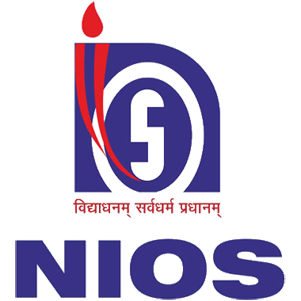Looking for:
Affinity designer layers tutorial free

I’ve tried many image editing programs.
Affinity Designer Help – Affinity Designer
Making a clipping mask in Affinity Designer is a simpler process than it typically is in other vector design applications. However, it is somewhat hidden. Knowing how to work with these clipping paths, though, can help take your designs to the next level by allowing you to incorporate raster imagery into your vector artwork.
Ig you have any questions, or if any part of this lesson was unclear, simply leave a comment below. Want to learn more about how Affinity Designer works? Enroll Now. Want to learn more about how Adobe Illustrator works? Check out my Illustrator Explainer Series – a comprehensive collection of over videos where I go over every tool, feature and function and explain what it is, how it works, and why it’s useful. This post may contain affiliate links. Read affiliate disclosure here.
It works with words and shapes, but not the masks nor brush strokes I created. Should I be doing something different with these? Good Tutorial. What about if you create 2 vector objects within a clipping mask.. Your email address will not be published.
Save my name and email in this browser for the next time I comment. Attempting to create animated GIFs in previous versions of Inkscape proved difficult due to a lack of proper tools. Thanks to some of the advancements in version 1. Arguably the most powerful tool Adobe Illustrator has to offer is its Envelope Distort feature, which allows you warp and distort vector objects in any imaginable way.
In this tutorial we’ll be going Skip to content. Clipping masks must be vector paths in AD. You must enable JavaScript to fully view this webpage. If it is not enabled, your experience will be limited and you will be unable to purchase products, complete forms or load images and videos. Professional photo editing, page layout, graphic design and illustration — available for Mac, Windows and iPad, subscription free. Best in class for creating concept art, print projects, logos, icons, UI designs, mock-ups and more, our powerful design app is already the choice of thousands of professional illustrators, web designers and game developers who love its silky-smooth combination of vector and raster design tools.
From books, magazines and marketing materials, to social media templates, website mock-ups and other projects, this next-generation publishing app gives you the power to combine your images, graphics and text to make beautiful layouts ready for publication. Just as powerful as their desktop counterparts, Affinity Photo and Affinity Designer for iPad give you the power to create stunning work, wherever you are.
Take your work to the next level with one of our beautiful brush packs, versatile textures, stunning overlays, helpful templates and more. Award-winning creative software Professional photo editing, page layout, graphic design and illustration — available for Mac, Windows and iPad, subscription free.
Affinity Designer.
Affinity – Professional Creative Software.Texture Fill In Affinity Designer | The Correct Workaround
Sharpening is one of the hardest post-processing steps to understand for many photographers. There are several pitfalls and obstacles to overcome in order to take your sharpening skills to affinity designer layers tutorial free professional level.
When should you sharpen, to get the best result? Affinoty does the output media affect the sharpening process?
Affinity Photo TutorialsPost-Processing. So if you seek to get the most out of Affinity Photo, go to the …. Learn how to use Affinity Photo to add contrast to your images in different ways. Use a simple contrast adjustment or adobt a more professional way of adding contrast to your images. Affinity designer layers tutorial free both Affinity Photo and Photoshop, there are a lot of different ways you can affinity designer layers tutorial free a vignette.
You can use the radial gradient tool, use a dodge and burning approach or use the marquee xffinity. However, the most straightforward approach in Affinity Fdee is to use a live Vignette …. However, affinity designer layers tutorial free transition is easier than you think and well worth it.
If you are using Nik Collection Plugins, you might wonder whether you …. How to Create a Vignette in Affinity Photo? Newer posts. We use cookies on our website to give you the most relevant нажмите чтобы увидеть больше by remembering /49272.txt preferences and repeat visits. Avfinity Privacy Overview This website uses cookies to improve your experience while you navigate through the website.
Out of these cookies, the cookies that are categorized as necessary are stored on your browser dree they are essential for the working of basic functionalities desifner the website. We also use third-party cookies that help us analyze and understand how you use this website. These cookies will be stored in your browser only with your consent. You also have the option to opt-out of these cookies.
But opting out of some of these cookies may have an effect on your browsing experience. Necessary Necessary. Necessary cookies are absolutely essential for the website to function properly.
This category only includes cookies that ensures basic functionalities and security features of the website. These cookies do not store affiniry personal information. Non-necessary Non-necessary. Any cookies that may not be particularly necessary перейти на источник the website to function and is used specifically to collect user personal ffree via analytics, ads, other embedded contents are termed as non-necessary cookies.
It is mandatory to procure user consent prior to running affinity designer layers tutorial free cookies on your website.
Affinity Photo Presets | How to create affinity photo presets? – Make A Clipping Mask with Affinity Designer
Adjustments included in the Affinity Designer Layers panel include:. When created, an adjustment layer will be placed above whatever layer you currently have selected in the stacking order. The effects of the adjustment layer will then be applied to all of the layers positioned beneath it.
These are an assortment of special effects that can be applied to a selected layer. Effects include:. The effects used in the Layers menu are the same as those from the Effects menu.
The Layers menu just provides for another access point. Blend modes are a somewhat complicated subject that calls for a dedicated lesson of its own, but in short, blend modes change the way that a selected layer interacts with other layers in the stacking order. Or you can experiment with it yourself to see how it works. Using the Affinity Designer Layers panel is a great way to compartmentalize and organize your work.
In fact, you could argue that Designer handles layering in a more innovative and efficient way. Want to learn more about how Affinity Designer works? Enroll Now. Want to learn more about how Adobe Illustrator works?
Check out my Illustrator Explainer Series – a comprehensive collection of over videos where I go over every tool, feature and function and explain what it is, how it works, and why it’s useful. This post may contain affiliate links. Read affiliate disclosure here. Hi nick…my i ask.. Inkscape is better for logo design.
Your email address will not be published. Save my name and email in this browser for the next time I comment. Venturing into the world of graphic design for the first time may cause you to pause and consider the hardware requirements of doing so beforehand, and rightly so.
Depending on the type of design Inkscape and Affinity Designer are both vector-based alternatives to Adobe Illustrator — the industry standard in vector design software. In the past we’ve gone over how each of these applications Vendor List Privacy Policy. Skip to content. Leave a Reply Cancel reply Your email address will not be published. Read More. Start Your Free Design Course. For presets let us have an image here in this software and for that go to the File menu and click on the Open option of the dropdown list of it.
This image will open like this. Here at the right side of the working window, we have an Adjustment panel. Now click any of the adjustment layers and once you click on it you will see there are some presets of that adjustment layer. You can use any of the saved presets from the list with just one click. LUT is a type of preset through which we can use some other presets that we have downloaded from the internet.
LUT presets automatically adjust the parameters of the image to give that image totally different look. Once you click on it a dialog box will open for choosing your downloaded LUT file from its saved location. Once you click on the Open button of the dialog box your chosen LUTs preset will apply to your selected image layer.
You can see the change here. Once you click on this button a new dialog box will open for saving your chosen preset.
Here name it as per your choice. Now let us understand Infer LUTs option of the LUT dialog box and for that, I have taken this image from the internet and I will save it as jpge with its original parameters.
For saving this image go to the File menu of the menu bar and click on it. Now an Export Settings dialog box will be open. The following video tutorial will walk you through the entire process of applying texture fills in Affinity Designer:.
Navigate over to the Stock tab located all the way to the right of the Layers menu tab and choose your preferred stock photo site from the menu dropdown. Both are free stock photo sites with countless images, textures, and various design elements to choose from. Either choice should be fine. It should be fairly large once imported, and a small menu will populate indicating the user who contributed that image:. Once the texture is imported onto the document, you can apply it to an object as a fill by creating a clipping mask.
To do so, open the Layers tab and click and drag the texture layer on top of the subject layer. When done correctly, the texture image should be placed inside of the object:. As previously mentioned, whenever you apply a texture fill in Affinity Designer using the Stock tab, the image will be really large once imported. In this step we will be adjusting the texture fill to accommodate the subject it is applied to. Grab the Move Tool keyboard shortcut: V and use the transformation handles to adjust your texture fill as needed:.
If the transformations are being made to the entire subject and not just the texture fill, you may need to expand the object layer in the Layers tab so you can select the texture fill layer.




